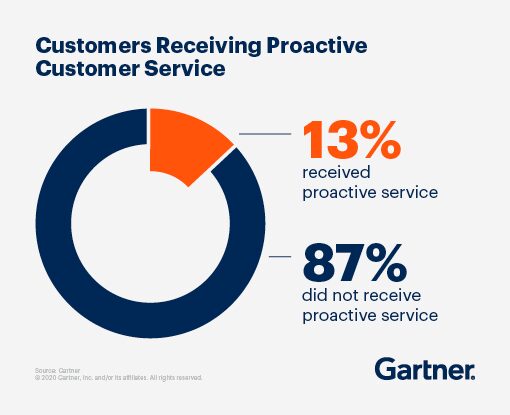Your contact centre is a busy place. You might have call queues out the virtual door on any given day, and not every customer query will be worth this long wait time. Some people just need an answer to a straightforward question. Sometimes they might need this question answered after business hours.
In scenarios like these, conversational AI can help customers resolve their issues.
What is conversational AI in contact centres?
The term ‘Conversational AI’ has arisen in much of our work on implementing speech recognition IVRs, speech analytics and chatbots for our customers. It seems it has become an umbrella term for these types of interactions.
It generally encompasses all conversational interactions that start with technology and escalate to a person if needed. AI is quite similar to interacting with a human agent. Of course, in voice interactions, you would notice the difference, but these differences are more subtle over instant messaging.
Conversational AI analyses and understands natural human speech to resolve customer queries. If the issue is beyond the knowledge and programming of the AI, then the system can transfer the caller to a human agent better equipped to solve complex problems. The program can learn and improve over time, remember past interactions, and handle multiple requests simultaneously.
Why leverage conversational AI?
There are many reasons why conversational AI is becoming more popular in contact centres. Here are just a few:
1. 24×7 availability
Your human agents work shifts during regular business hours and need to take breaks. On top of that, keeping your contact centre open 24×7 costs time, money and resources.
Conversational AI in contact centres enables you to be available and support your customers 24×7. By automating customer support via chatbots, you can provide instant assistance to customers even during weekends and late at night.
2. Optimise contact centre costs
Conversational AI drives cost savings by automating tasks usually completed by a human agent, so your agents can focus on more complex tasks. Or, you can reduce the number of overall agents needed to handle your contact centre.
Training your agents takes time and requires them to spend sessions learning the skills to address new issues. Whilst conversational AI also takes time to implement, it learns and improves over time by analysing past customer interactions, so you don’t always need to provide additional updates.
3. Easy communication between customers and businesses
Conversational AI in contact centres simplifies customer communication by using language specific to your industry. This does not mean your AI will send jargon; the bots learn your industry’s language by analysing real-life uses and recorded conversations.
It can also handle multiple requests at one time. Humans are limited to the number of customers they can handle well. To give their best service to a customer, many agents can only focus on one at a time, which often leads to long wait times. Conversational AI can address many customers at once and send through links or resources that your customers need at the same time.
4. Personalised customer experiences
Conversational AI has the potential to deliver personalised customer experiences by learning customer details, recalling previous interactions and remembering preferences. Many people claim they still prefer speaking with a human agent, as they can provide personalisation, but conversational AI takes this to the next level.
By using conversational AI, contact centres can provide a more customised experience for customers, leading to increased customer loyalty and satisfaction.
5. Gain behavioural insights about your customers
Conversational AI collects vast amounts of data that you can leverage in your contact centre. When taking a call, your human agents need to focus on listening to the customer and resolving their problem. They do not have time for recording or noting specific data outside the customer’s details.
Conversational AI can record conversations, create transcripts, deliver insights about customer sentiment, etc. They are a tool that contact centre leaders can leverage to understand their customers better. Such information becomes helpful in reporting and driving improvement in your customer service. Additionally, conversational AI can help organisations identify customer service issues early and resolve them before they cause long-term damage.
6. Adding a human touch to your contact centre
Conversational AI in contact centres is very similar to interacting with a contact centre agent. Both involve using natural language to communicate with someone else, and you can use both to resolve customer issues. Conversational AI enhances the human touch in your contact centre. When your agents have a smaller call queue, they can deliver meaningful customer service.
What to consider before implementing conversational AI
In a previous blog, I discussed the benefits that human agents bring to a contact centre and what you must consider before deploying technology such as AI. The great benefits that conversational AI brings to a contact centre are only as good as the solution you deploy as well as the time and resources you have available for the initial implementation. Done well, you’ll be able to ensure that CX does not suffer as a result.
In summary, here is what you need to consider before rolling out conversational AI:
- Some customers will not want to speak or chat with a bot. If you allow them to choose between instant messaging and calling, you will have happier customers.
- Carefully consider the role of conversational AI before deploying it and how it will work alongside your human agents. If you do not consider these points, the customer experience may become sterile and dysfunctional.
- Listen to your customers’ preferences and address those where possible. Your customers may not want to deal with a bot for specific scenarios or they may prefer it in others.
Premier Contact Point’s cloud contact centre solution
Our cloud contact centre solution delivers conversational AI solutions that support your customers and your agents. We provide contact centre training, affordable & innovative features, such as visual IVR, CRM integration, self-service options and omnichannel queueing.
You can get in touch with us to book a demo of our cloud contact centre solution.









